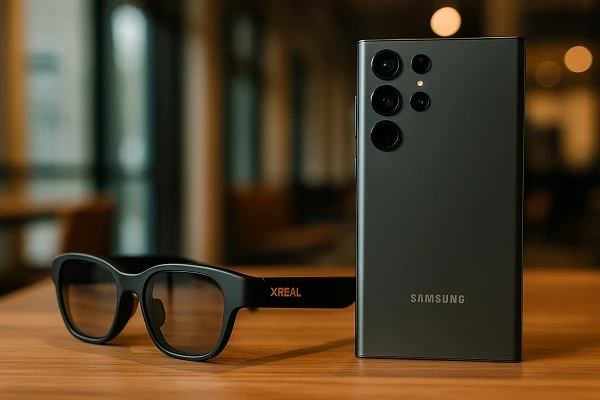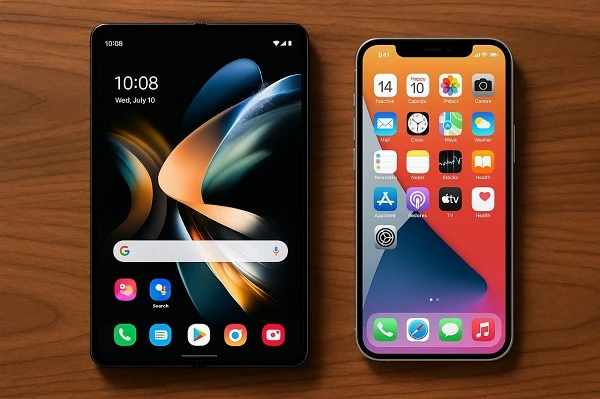Last Updated: November 25, 2025
A Special Condition Marked on Your HBL Account: Meaning, Causes, Fix and Your Rights in Pakistan

Many HBL customers in Pakistan suddenly discover that “a special condition is marked on your account” only when something goes wrong: the ATM shows “technical issue occurred”, online transfers fail, or the HBL mobile app refuses to send money. Receiving funds still works, but you cannot withdraw or transfer your own money.
When you call the helpline, they tell you to visit the branch. At the branch, staff say head office has “put a condition” and they don’t know why. A request is initiated, you are told to wait “three working days”, and in reality the issue may take a week or more to resolve. The most frustrating part: the condition is removed later without any explanation of what it was, why it was applied, or what changed.
This article explains the full picture behind such “special conditions” on HBL accounts: what they likely mean, how they are connected to KYC, AML and internal risk systems, how Pakistani banking regulation works, how HBL’s behaviour compares with banks in other countries, and what a customer-friendly, modern approach should look like.
What Does “A Special Condition Marked on Your HBL Account” Mean?
HBL’s mobile app and online banking sometimes show messages like:
- “A special condition marked on your account. Kindly contact HBL helpline.”
- “A condition is marked on your account due to which this transaction cannot be processed.”
These phrases are internal system labels, not legal terms. In simple language, they mean:
Your account has been partially restricted by the bank’s internal risk, compliance or operations team.
This usually leads to:
- Outgoing transactions (transfers, bill payments, debit card usage, withdrawals) being blocked or limited.
- Incoming transactions (receiving salary, transfers, deposits) still being allowed in many cases.
The bank has many types of “conditions” in its system. They can relate to:
- KYC (Know Your Customer) and missing or expired documents.
- AML (Anti-Money Laundering) and CFT (Counter Financing of Terrorism) alerts.
- Sanction screening or name matches on watchlists.
- Internal risk triggers, like unusual transaction patterns.
- Operational or technical flags put for manual review or error correction.
The big problem is that HBL often does not clearly tell customers which category applies, and uses vague wording like “special condition”, creating stress and confusion.
Common Reasons Why HBL Might Mark a Special Condition
Banks do not randomly play with customers’ accounts; there are usually triggers and regulatory reasons (even if communication is poor). Some common scenarios include:
1. KYC / Document or Profile Issues
Under State Bank of Pakistan (SBP) regulations, banks must keep customer information updated:
- Valid CNIC or identity document.
- Updated address and contact details.
- Occupation, income source and risk profile.
If:
- Your CNIC has expired.
- Your profile is incomplete or outdated.
- Your account type no longer matches your transaction behaviour.
the bank’s system may automatically or manually apply a restriction until the KYC is updated. Ideally this should be communicated clearly in advance, but often it is not.
2. AML and Suspicious Transaction Monitoring
Pakistani banks must follow AML/CFT laws based on SBP’s regulations and international standards such as FATF recommendations. Banks run automated systems that look for:
- Unusual large deposits or withdrawals.
- Sudden high-value transfers inconsistent with the customer’s profile.
- Frequent movement of funds among many accounts.
- Transactions involving high-risk countries or entities.
If something triggers a red flag, the bank may:
- Temporarily block outgoing transactions.
- Ask for source-of-funds explanation or supporting documents.
- Report to Financial Monitoring Unit (FMU) if required.
In practice, some customers only see a generic error message like “special condition marked”, without any proper explanation from HBL.
3. Sanctions or Name Screening Hits
Banks screen customer names and transactions against:
- International sanctions lists.
- Local watchlists.
- Negative media or politically exposed person (PEP) lists.
Sometimes a customer’s name may be similar to a sanctioned person. This can cause a false positive hit, leading to a temporary condition until the bank manually verifies identity. Again, this should be resolved quickly and transparently, but that does not always happen.
4. Internal Risk or System Error
Not every “special condition” is high risk. Some flags may be:
- A result of system upgrades or batch processes.
- Misconfiguration in limits or product settings.
- Errors in linking CNIC, account type or card limits.
In such cases, the bank may quietly fix the issue after an internal review – which is why some customers see the condition removed after several days without any action from their side.
Why Does the ATM Say “Technical Issue” While the App Says “Condition Marked”?
One of the most confusing things is that:
- ATMs sometimes show messages like “Technical issue occurred, please contact your bank”.
- The mobile app shows “a special condition is marked on your account”.
This happens because:
- ATMs often use older interfaces and generic error codes.
- The core banking system might send a standard “decline” notification instead of a descriptive message.
- The app is slightly more updated and able to show internal flags like “condition marked”, but still does not show full detail.
For the customer, this feels like a technical problem, but in reality it is usually a deliberate restriction on the account.
HBL’s Customer Handling: Where It Often Fails
Most of the anger and frustration around “special condition marked” is not about the restriction itself, but about how HBL handles it. Common complaints include:
1. No Prior SMS or Email Notification
Customers are rarely told:
- That a condition is about to be applied.
- What the reason is.
- What documents or actions are required to avoid blockage.
Instead, they only discover the condition when they urgently need money.
2. Helpline That Cannot See or Resolve the Condition
HBL’s helpline frequently tells customers:
“We cannot see the detailed reason. Please visit your branch.”
This suggests:
- Call centre agents have limited visibility into compliance and risk flags.
- They have no authority to override or escalate quickly.
- There is poor integration between the core banking system, risk system and customer service tools.
3. Forced Branch Visits in a Supposedly “Digital” Era
HBL markets itself heavily as a digital bank with a strong app and internet banking. Yet, for many issues like “special condition marked”, customers are forced to:
- Stand in queues at a branch.
- Talk to multiple staff who may not understand the restriction.
- Wait for the branch to send an email or raise a ticket to head office.
This contradicts the entire idea of modern, seamless digital banking.
4. Long and Unpredictable Resolution Time
Customers are often told “three working days”, but in practice:
- It may take five or six days or even longer.
- There is no proactive update from the bank.
- The restriction is removed silently without explanation or apology.
Meanwhile, the customer’s money remains effectively frozen for routine daily life.
5. Zero Transparency: No Reason Given, Before or After
The most serious issue is lack of transparency. Customers rarely receive:
- A clear written reason for why the condition was applied.
- Any explanation for why it was removed without asking for documents.
- Any evidence that this will not happen again randomly.
This uncertainty damages trust. People start to feel they cannot rely on their bank during emergencies.
How HBL Has Operated Internationally – And Why It Behaves Differently Abroad
HBL has operated in multiple countries including the UK, USA, Gulf region and China. In foreign jurisdictions, it must follow:
- Local banking and consumer protection laws.
- Strict AML and sanctions regimes.
- Strong oversight from regulators who can impose heavy fines and restrictions.
For example:
- In the USA, HBL’s New York branch previously faced regulatory action over AML issues, leading to serious consequences and eventual winding down there.
- In the UK or EU, banks must provide clearer information about account freezes and have robust complaint handling and ombudsman systems.
Because of this, HBL and other banks are usually much more cautious and structured abroad. They cannot afford vague messages, unexplained freezes and poor timelines, as regulators can intervene strongly.
Who Regulates HBL in Pakistan – And What Are Your Rights?
In Pakistan, HBL is regulated primarily by the State Bank of Pakistan (SBP). SBP issues rules on:
- Customer due diligence (CDD) and KYC.
- Anti-money laundering and suspicious transaction reporting.
- Consumer protection and disclosure.
Customers also have access to:
- The Banking Mohtasib (Ombudsman) – where you can escalate complaints if the bank does not resolve issues properly.
- SBP’s own complaint portal for serious or repeated grievances.
While the enforcement may not be as aggressive as in some Western markets, these mechanisms do exist, and customers can use them to push banks toward better behaviour.
What a Better, Customer-Friendly Approach Should Look Like
The core problem is not that banks perform checks – they are legally required to. The issue is how they communicate and manage the process. A modern, fair approach would include:
1. Instant SMS and Email When a Condition Is Applied
The moment the system flags the account, HBL should send:
- A clear SMS: “A temporary restriction has been applied to outgoing transactions on your account due to [reason category]. You can still receive funds. Please [action] by [date].”
- An email with details and steps to resolve the issue.
This prevents “surprise declines” at ATMs and point-of-sale terminals.
2. Clear Reason Codes Inside the App
The HBL app should display:
- Status: Restricted / Partially Restricted / Normal.
- Reason Category: KYC update required / Unusual transaction / Document missing / Legal order / Technical review.
- Action Required: Upload CNIC, visit branch with specific documents, call helpline etc.
Even if full detail cannot be shared for legal reasons, broad categories and next steps must be shown.
3. Digital Resolution for Most Cases
Instead of forcing branch visits for everything, HBL should:
- Allow document upload through the app or web.
- Use video KYC or secure chat for clarifications.
- Digitally confirm suspicious transactions with SMS or in-app approval.
Physical branch visits should be required only in high-risk or legally mandated scenarios.
4. Honest and Short Resolution Timelines
If the bank says “three working days”, it must:
- Genuinely resolve within three days.
- Send updates if more time is needed.
- Consider compensation or fee reversal if the delay is excessive and caused customer loss or embarrassment.
5. Explanation When the Condition Is Removed
When your account returns to normal, the bank should send:
“Your account restriction has now been removed. Reason: review completed / document verified / system error corrected. We regret any inconvenience caused.”
This helps rebuild trust and gives you closure.
6. Asking for Information Without Blindly Freezing Accounts
Banks can also improve by:
- Sending multiple reminders before applying restrictions.
- Placing soft limits instead of complete blocks (for example, temporarily lowering transfer limits instead of freezing all outgoing funds).
- Using risk-based logic – not treating every small issue as a reason to completely lock the account.
What You Can Do If a Special Condition Is Marked on Your HBL Account
While systemic change is slow, you can still protect yourself and push for better treatment. Practical steps:
1. Collect Evidence
- Take screenshots of the error messages in the app.
- Note the date and time when the problem started.
- Keep the SMS or email communication (if any).
2. Call the Helpline – But Ask Specific Questions
Instead of just accepting “visit branch”, ask:
- “Is it KYC, AML or technical?”
- “Can you see if any document is missing?”
- “Can you send me an email stating why I need to visit the branch?”
A written record is helpful if you escalate later.
3. Visit the Branch with All Possible Documents
When you go, carry:
- Original and copy of your CNIC.
- Any relevant income or business documents if your transactions are large.
- Proof of source of funds if you recently received a big payment.
Ask the branch to:
- Tell you in writing the type of condition (KYC, AML, etc.).
- Give you a tracking number for the request raised to head office.
- Confirm the expected resolution time.
4. File an Official Complaint if Delays Are Excessive
If the issue remains unresolved beyond the promised time, you can:
- File a written or email complaint with HBL customer care, quoting your account, dates and reference numbers.
- If still unresolved, escalate to the Banking Mohtasib or SBP complaint portal with all supporting documents.
Banks take ombudsman and regulator complaints more seriously because they may lead to fines or formal warnings.
5. Consider Diversifying Your Banking
To avoid complete dependence on one bank:
- Maintain at least one backup account with another bank for emergencies.
- Spread critical funds across two or more institutions.
- Use faster, more transparent banks for everyday transactions if possible.
Conclusion: Your Money, Your Rights
“A special condition marked on your HBL account” is not just a technical phrase – it directly affects your ability to use your own money. While HBL must obey KYC and AML rules, it also has a duty to:
- Inform you clearly and promptly.
- Offer realistic resolution times.
- Provide transparent reasons before and after the restriction.
- Improve digital channels so that customers are not forced to visit branches for every small issue.
Pakistani customers deserve the same level of respect, clarity and reliability that banks provide in more regulated markets. Until the system improves, knowing how these conditions work – and how to respond – can help you protect yourself and demand better service from your bank.
FAQs: “A Special Condition Marked on Your HBL Account”
What does “a special condition marked on your HBL account” actually mean?
It usually means that HBL has placed an internal restriction on your account, often related to KYC, AML or risk controls. Outgoing transactions may be blocked while the bank reviews or updates your information.
Why can I still receive money but not send or withdraw it?
In many cases, banks allow incoming funds but block outgoing transactions when a condition is active. This is done to reduce risk while still letting payments, salaries or transfers come in.
Is this the same as my account being frozen?
Not always. A “special condition” can be a partial freeze, where only certain functions (like ATM withdrawals or transfers) are blocked. A full freeze is more severe and is usually linked to legal orders or high-risk alerts.
How long does it take HBL to remove such a condition?
Officially, branches often say 2–3 working days, but many customers report 5–7 days or more in practice. It depends on the cause, the internal workload and how quickly you provide any required documents.
Can I avoid visiting the branch?
At the moment, HBL frequently insists on branch visits for many conditions. However, you can still ask the helpline if your specific issue can be resolved with document upload, email or app-based verification. Over time, banks may shift more of these processes to digital channels.
Who can I complain to if I feel HBL has mishandled my account?
First, submit a formal complaint to HBL and keep the reference number. If you do not get a satisfactory response, you can escalate to the Banking Mohtasib (Ombudsman) or use the State Bank of Pakistan’s complaint mechanisms.
What is the best way for HBL to handle such conditions?
Best practice would be:
- Sending instant SMS and email alerts when a condition is applied.
- Showing a clear reason and action steps in the app.
- Resolving most issues digitally without forcing branch visits.
- Providing a clear explanation and apology once the restriction is removed.
You May Also Like:

Lahore Smog Emergency 2025: Causes, Health Risks, Govt Actions & Safety Tips in Pakistan...

HBL Freedom Accounts Are Being Converted to Islamic Accounts — No Benefits, No Way Back!...

How Your Smart TV Spies on You More Than Your Smartphone...

You Could Be Fined €3,000 Over Your Burqa — Italy’s New Bill Explained...

The Hidden Cost of Free AI Tools: How You’re Paying With Your Personality Data...

The Silent Killer Inside Your Kitchen: What You're Eating Every Day Without Knowing It...

Can the Samsung Galaxy S25 Ultra with Xreal AR Glasses Replace Your Laptop?...
